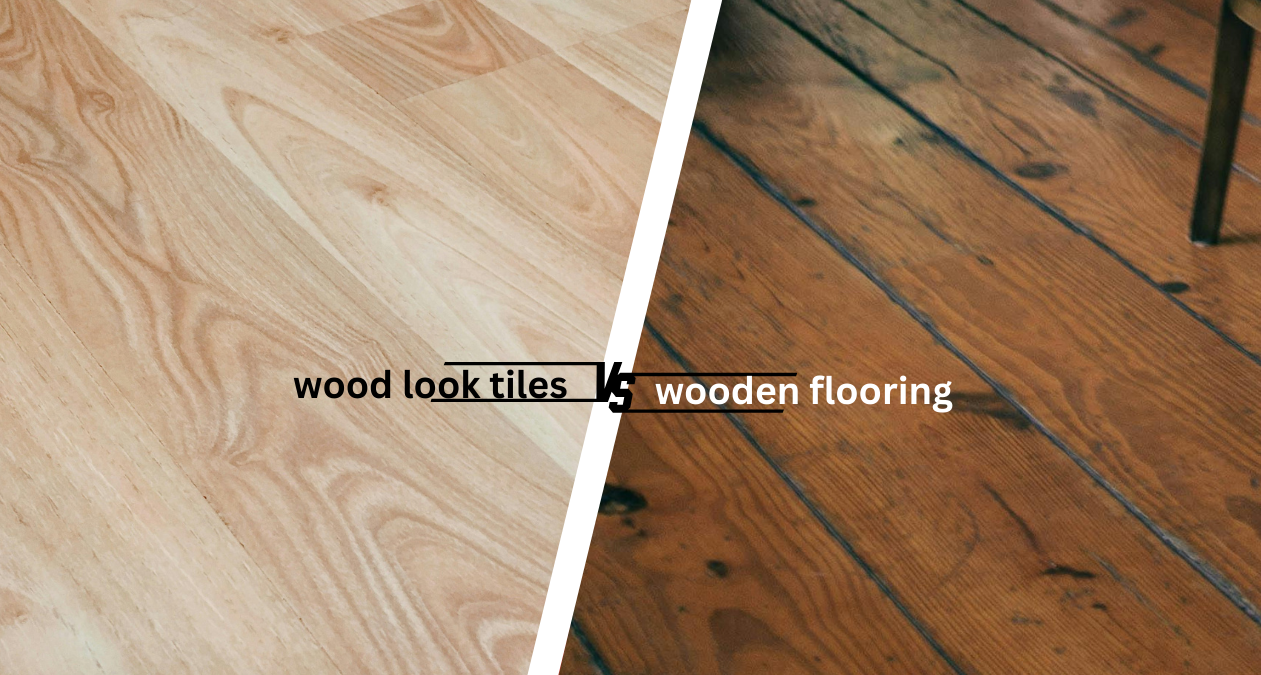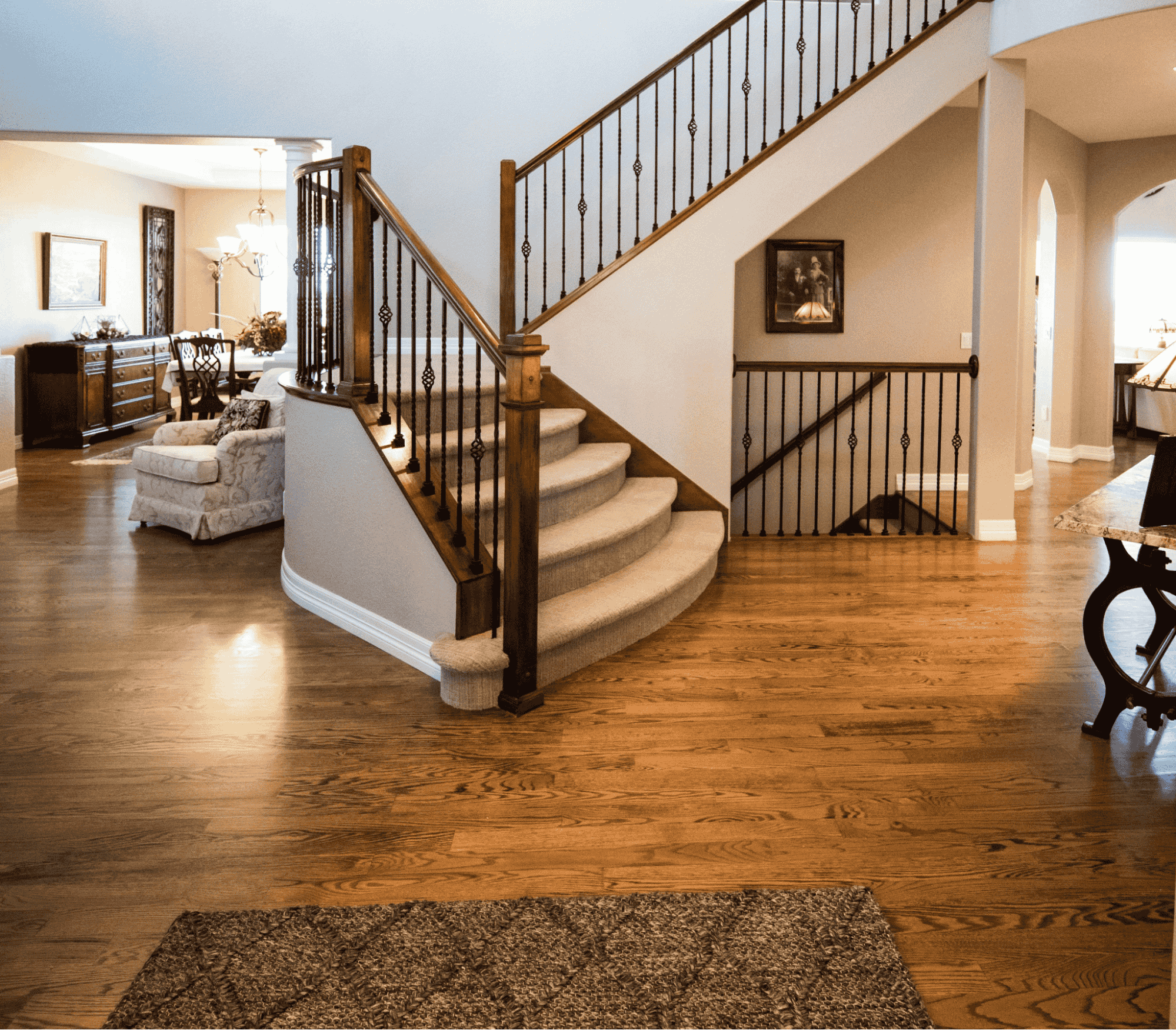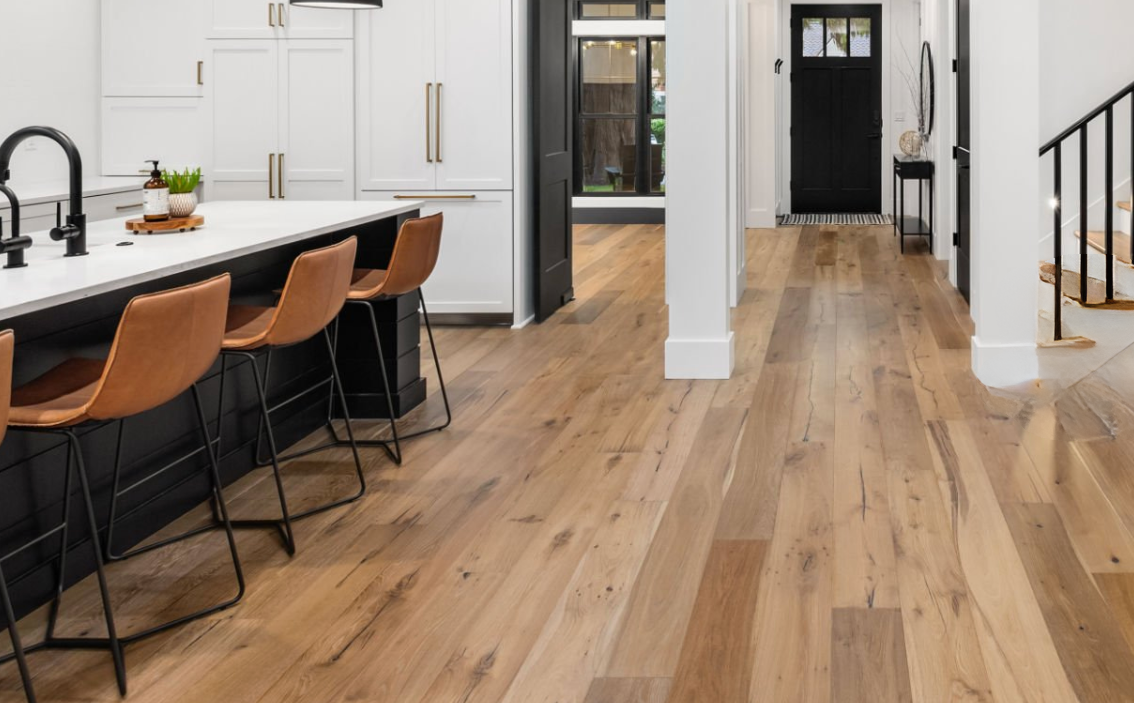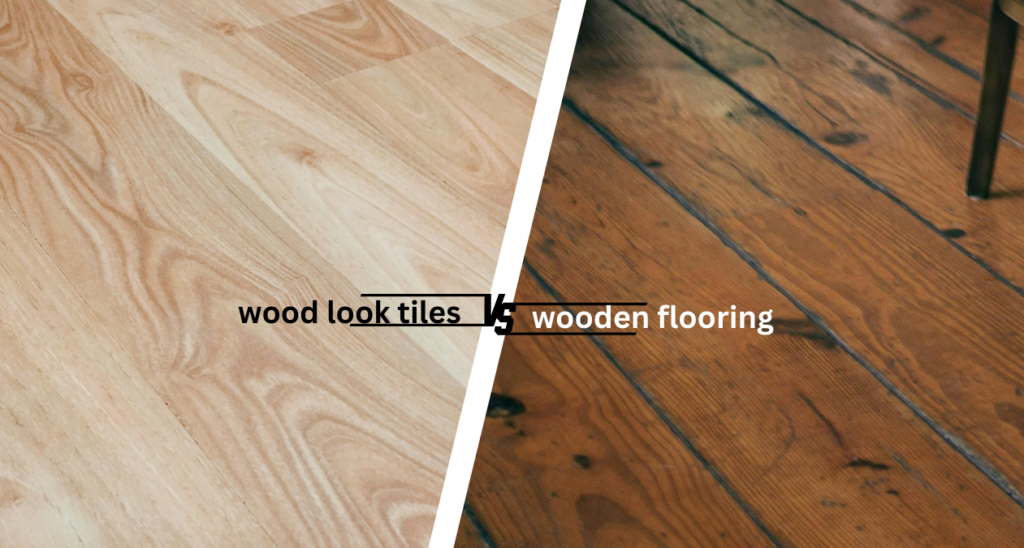Wooden Flooring vs Tiles: Which One Suits Indian Homes Best?
When it comes to choosing the right flooring for your home, can be a tough decision. Indian homeowners are often stuck between two popular options—wooden flooring vs tiles.
Both have their own appeal, and the choice largely depends on factors like budget, aesthetics, durability, and maintenance. At Clean Fanatics, we understand that flooring plays a crucial role in defining the look and feel of your space, so we’ve put together this comprehensive guide to help you decide which flooring option works best for your home.
Let’s dive in to explore the pros and cons of wooden flooring vs tiles, the key differences, and why wooden tiles are gaining popularity as a fantastic alternative in India.
Wooden Flooring vs Tiles: Which is best for Indian homes?
Key Takeaways
- Wooden flooring offers warmth and elegance but requires more maintenance and is less suitable for humid climates.
- Tiles are durable, moisture-resistant, and easier to maintain, making them ideal for most Indian homes.
- Wooden tiles provide a compromise, offering the look of wood with the practicality of tiles.
- Cost-wise, tiles are generally more affordable than wooden flooring in terms of both installation and long-term maintenance.
Wooden Flooring vs Tiles: Major Differences

Before we get into the nitty-gritty of each type of flooring, let’s take a look at some of the key differences between wooden flooring and tiles. These factors can help you determine which one aligns better with your home’s needs and lifestyle.
1. Aesthetics and Style
Wooden Flooring: There’s no doubt that wooden flooring exudes a warm, luxurious, and natural appeal. It has a timeless charm that makes any space look cozy and elegant.
Tiles: On the other hand, tiles offer immense variety in terms of design, color, and texture. From sleek ceramic tiles to natural stone finishes, tiles provide flexibility in design for both modern and classic interiors. They can mimic the look of wood, stone, or even marble at a fraction of the cost.
2. Durability and Maintenance
Wooden Flooring: While beautiful, wooden flooring requires more care, especially in high-traffic areas. It’s susceptible to scratches, and dents, and can be damaged by moisture, which is a big concern in India’s humid regions.
Tiles: Tiles, especially ceramic or porcelain, are highly durable and resistant to scratches, stains, and moisture. They are perfect for high-traffic areas and homes with pets or children. Regular mopping and occasional deep cleaning are enough to keep them looking new for years.
3. Climate Suitability
Wooden Flooring: India has diverse climates, ranging from dry heat to high humidity, which can affect the longevity of wooden flooring. Humid conditions can cause the wood to warp or expand, making it less ideal for coastal regions or areas with heavy monsoons.
Tiles: Tiles, on the other hand, are well-suited for all climates, especially in areas with high humidity. They don’t swell or warp, making them ideal for Indian cities like Mumbai, Bangalore, and Chennai.
4. Cost
Wooden Flooring: In India, natural hardwood flooring can be quite expensive. Not only are the materials costly, but the installation process can be labor-intensive and requires skilled workers. This option is typically considered a luxury.
Tiles: Tiles are generally more affordable and offer a wide range of budget options. Whether you’re looking for basic ceramic tiles or high-end designer tiles, there’s something for every budget.
5. Environmental Impact
Wooden Flooring: If you’re eco-conscious, you may prefer wooden flooring. Many wooden floors today are made from sustainably sourced wood, making them an environmentally friendly choice.
Tiles: Tiles are made from natural materials like clay and stone, but the production process can have a higher environmental impact due to the energy required in manufacturing and transportation.
Wooden floors: Pros and Cons
Let’s dive deeper into the pros and cons of tiles vs wooden flooring, helping you make an informed choice.
Pros of Wooden Flooring

- Natural Beauty: Wood brings warmth and elegance to any space.
- Timeless Appeal: Wooden flooring never goes out of style.
- Comfort: Wood is naturally softer and warmer underfoot, making it more comfortable for walking and sitting.
Adds Value: Homes with wooden flooring tend to have higher resale value.
Cons of Wooden Flooring
- High Maintenance: Wooden floors require regular polishing and care to maintain their appearance.
- Costly: The installation and maintenance of wood flooring can be expensive.
- Not Moisture-Friendly: Wooden floors can bend or expand in high-moisture areas.
- Scratch-Prone: Wood is susceptible to scratches, dents, and wear in high-traffic areas.
Tile floors: Pros and Cons
Pros of Tiles

- Durability: Tiles are highly durable and resistant to wear, scratches, and stains, making them perfect for high-traffic areas.
- Variety of Designs: You have endless options when it comes to colors, patterns, and textures.
- Moisture-Resistant: Tiles are ideal for areas like kitchens and bathrooms due to their resistance to water and humidity.
Easy Maintenance: A simple sweep and mop are enough to keep tiles looking clean and polished.
Cons of Tiles
- Cold Underfoot: Tiles can be cold to walk on, especially in winter months.
- Hard Surface: While durable, tiles are less forgiving if you drop something fragile on them.
- Installation Costs: Although tiles themselves can be budget-friendly, the installation process can sometimes be costly due to labor and grouting.
Hardwood vs Tile in High-Traffic Areas
If you’re concerned about durability in high-traffic areas like hallways, living rooms, or commercial spaces, tiles are generally the better choice. We have even written a dedicated article explaining how to select tiles for living room.
Hardwood can wear down quickly under heavy foot traffic, especially if not maintained properly.
However, high-quality hardwood floors with proper finishing can withstand moderate footfall while offering that signature warmth and luxury.
Tiles, especially porcelain and ceramic, are designed to handle heavy use without losing their shine or texture. They are scratch-resistant and less likely to show wear, making them the go-to option for busy households or spaces with pets and kids.
Lifespan of Wooden Flooring vs Tiles
The lifespan of wooden flooring and tiles varies significantly based on maintenance, usage, and environmental conditions. Wooden flooring, especially hardwood, can last anywhere from 20 to 50 years or more with proper care, including regular polishing, refinishing, and protection from moisture.
Tiles, on the other hand, are much more durable, with a lifespan of 50 to 100 years, depending on the material.
Ceramic, porcelain, and natural stone tiles are highly resistant to scratches, stains, and water damage, making them ideal for high-traffic areas and wet spaces like bathrooms and kitchens.
Wood vs Tile Flooring Cost: Which Is More Budget-Friendly?
The cost of wooden flooring vs tiles in India depends on several factors, including the material quality, installation, and maintenance.
Wooden Flooring Cost: Natural wood flooring is typically on the expensive side. Hardwood like teak, oak, or walnut can cost anywhere between ₹500 to ₹1,500 per square foot, not including installation charges. Additionally, wooden floors require regular polishing and maintenance, which adds to the long-term cost.
Tile Flooring Cost: Tiles offer a much broader range of pricing. Basic ceramic tiles can start as low as ₹40 to ₹60 per square foot, while premium designer tiles can go up to ₹500 or more per square foot. Installation is generally quicker and cheaper compared to wood, and maintenance costs are minimal.
For those who love the look of wooden flooring but want the durability of tiles, wooden tiles are an excellent alternative. Here’s why they are becoming increasingly popular in Indian homes:
Low Maintenance: Wooden tiles, often made of ceramic or porcelain, require far less maintenance than natural wood. You don’t have to worry about polishing or treating them, making them a hassle-free option.
Moisture Resistant: Unlike real wood, wooden tiles are completely resistant to moisture. This makes them perfect for areas like bathrooms, kitchens, or even outdoor spaces, where water exposure is a concern.
Durability: Wooden tiles are as durable as any other type of tile, meaning they can withstand high foot traffic without getting scratched or dented. This makes them an excellent choice for busy households with pets or children.
Cost-Effective: While natural hardwood can be expensive, wooden tiles offer a similar look at a much lower cost. This makes them a great budget-friendly alternative for homeowners who want the warmth of wood without the hefty price tag.
Versatility: Wooden tiles come in a wide range of colors, textures, and finishes, allowing you to achieve the exact look you want, whether it’s a rustic, traditional Indian home or a sleek, modern space.
1. Which is better, wood or tile flooring?
It depends on your priorities. Wooden flooring offers warmth and elegance but requires more maintenance. Tiles, on the other hand, are more durable, affordable, and better suited for India’s varied climate.
2. Is wooden flooring good for high-traffic areas?
Not really. Wooden flooring can show wear and tear more easily in high-traffic areas. Tiles are generally better suited for spaces with heavy footfall.
3. What is the cost difference between wooden flooring and tiles?
Wooden flooring is typically more expensive, both in terms of material and installation. Tiles are more budget-friendly and have lower long-term maintenance costs.
4. Can wooden tiles be used in wet areas like bathrooms?
Yes, wooden tiles are moisture-resistant, making them ideal for wet areas like bathrooms and kitchens where natural wood would not be suitable.
If you aren’t sure about this, simply book our bathroom renovation service in Bangalore and we’ll pick the right tile according to your bathroom.
5. Are tiles easier to maintain than wooden flooring?
Yes, tiles are much easier to maintain. A simple mop and sweep will keep them clean, whereas wooden floors need regular polishing and special care.
6. Which type of flooring adds more value to a home?
Both options can add value but wooden flooring tends to offer a more premium feel and can boost resale value more than tiles in certain cases.
Conclusion: Choosing the Right Flooring for Your Homes
When it comes to choosing between wooden flooring vs tiles, the decision ultimately depends on your personal preferences, budget, and the specific needs of your home.
While wooden flooring offers a luxurious feel, it requires more maintenance and may not be ideal for high-traffic or moisture-prone areas in Indian homes. Tiles, on the other hand, are durable, easy to clean and maintain, and cost-effective, making them a practical choice for most households.
If you love the look of wood but want the durability of tiles, consider wooden tiles—a perfect blend of style and practicality. Contact Clean Fanatics, we can help you make informed decisions about your home’s flooring, ensuring that your investment not only enhances the beauty of your home but also lasts for years to come.
Revamp your living room with Clean Fanatics’ top-notch tile replacement and renovation services, combining aesthetics and durability for a timeless look.

